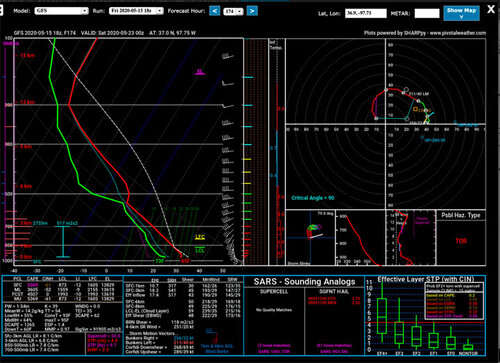Warren Faidley
Supporter
For fun, I scrolled through the CFS 500mb height anomalies and from next week onward.... and one would think the Yellowstone Caldera had let go.

Maybe all of our bitching today was the magic rain dance we need for chasing because all of a sudden next weekend looks like it has some decent potential.
It's becoming increasingly difficult for me not to suspect that either climate change, or climate variability on decadal time scales, has pushed us into a regime that makes Plains storm chasing less sensible an obsession than its short history of wide participation (i.e., the 1980s-2010) had perhaps led us to believe.
I’m desperate. I’m not above admitting thatIt's relative - when everything starts to consistently look like shit, even something that doesn't look great starts to look okay by comparison.
See: Wed 5/13/20, the most highly anticipated assortment of popcorn to marginally organized convective structures in #wxtwitter history... dare we try to top it so soon?It's relative - when everything starts to consistently look like shit, even something that doesn't look great starts to look okay by comparison.
I'm surprised the atmosphere is going ape S**T since my vacation got cancelled due to this Corona crap.
"One of the worst seasons ever" just doesn't pack the same punch it used to. It's becoming increasingly difficult for me not to suspect that either climate change, or climate variability on decadal time scales, has pushed us into a regime that makes Plains storm chasing less sensible an obsession than its short history of wide participation (i.e., the 1980s-2010) had perhaps led us to believe. We had just had 2018, and 2017, and 2014. If you consider the nine-year stretch from 2012-present, and are allowed to remove merely two 7-10 day periods (May 18-28, 2013; and May 21-25, 2016), so much of recent spring seasons have been dominated by unfavorable patterns for chaseable Plains supercells and tornadoes. Granted, 2015 and 2019 were convectively active for periods, albeit messy.
